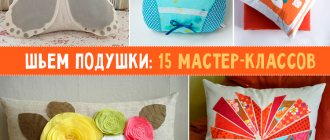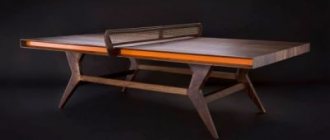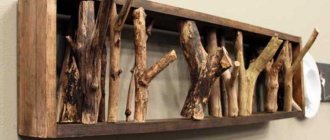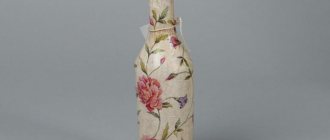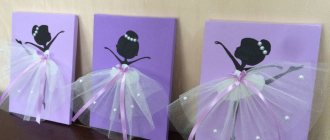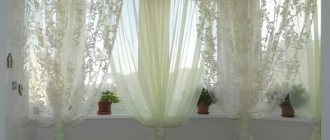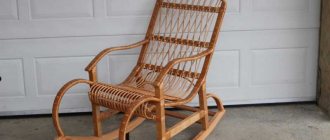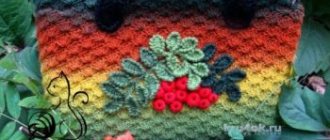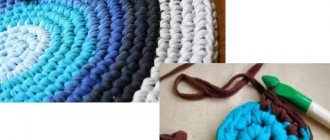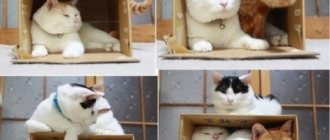It’s very easy to refresh the design of your room with the help of a bright and stylish rug that you can make yourself. To do this, it is not at all necessary to run to the store and purchase expensive materials. It’s enough to rummage through your own closet and choose old unnecessary things. A detailed master class will show you how to make an original rug with your own hands.
It has long been known that the most valuable and expensive are handmade carpets, because the process of their production lasts almost a whole year, sometimes more. For example, Persian carpets are still woven by hand.
However, for beginners in this business it is worth starting with the simplest options. In one day, without any special skills, you can make a small bedside rug.
Benefits of homemade rugs
Firstly, it saves money, which can be spent later on more useful or pleasant purchases.
Secondly, this is the release of rag debris from apartments and attics, from things that the owners definitely won’t need, and the Russian tradition of “what if it comes in handy” doesn’t allow throwing it all away.
Thirdly, this calm activity will help calm the nerves of yourself and those around you.
Fourthly, this is the creation of a charming view of the room, the pleasure of the completed task and the praise of relatives.
Using knitting yarn
Yarn is a universal material for creativity . Knitted yarn will stretch well during knitting, but at the same time ideally holds the shape of the finished product. It does not fade and is reasonably priced. A creation made from such yarn will look rich.
Products made from tape yarn will not turn out flat, unlike ordinary threads. It will look voluminous, airy and even lush.
Knitted yarn has good stretch
The product will be durable, the color will remain the same and will not fade, it will serve until the owners get tired of it.
Woven carpets
Such carpets look more solid, reminiscent of durable mats. Making them will be a little more difficult, but only at first. They are made from thick threads or the same strips of fabric.
First you will have to make a small loom to create a masterpiece. And it’s not at all necessary to order it in stores. The machine for creating a woven carpet will be a wooden frame, along the top and bottom of which nails are nailed. The size of the frame will determine the dimensions of the future creation. If desired, several parts can be combined into one large carpet.
The technology for creating floor decorations is quite simple and does not require much time. Strips of fabric are attached to nails at the top and bottom, creating a rag fabric. The closer the nails are placed, the stronger the final creation will be.
All that remains is to thread horizontal stripes in the form of a braid between the vertical ribbons, as they did in labor lessons in elementary school, and secure them to the outer strips.
When the carpet is ready, carefully remove the nails and place the rug in the chosen place.
Shape selection
The most popular are round or oval-shaped rugs that will harmoniously fit into any room interior. But rectangular models, ideally suited to the high-tech style, are no less in demand. Rugs of non-standard configurations will fill the atmosphere of the room with cheerful and cheerful notes.
The modern market is rich in a variety of different models, but handmade rugs (pictured) will be unique and will not incur financial costs. In addition, you will get rid of old things and buy new ones.
Woven round carpets
Unusual round mats can be made using a regular gymnastics hoop. To begin with, the opposite parts of the hoop are connected with strips of fabric, trying to place them as close to each other as possible. Then, from the center of the circle, they begin to weave a braid, passing ribbons first along the top of the strips, then under them. If necessary, add vertical stripes.
The resulting round carpets can be combined into one whole or used individually.
Old T-shirts will come in handy
The master class will show you how to make a rug from old T-shirts with your own hands. To get a voluminous and beautiful product from thin knitwear, you need to use a rather complex weaving technique called a “French bracelet”.
To do this, you need to take three large knitted T-shirts and cut them into strips 20-25 cm wide. They need to be connected using threads or knots so that you get strips up to 3 meters long.
In any order, you first need to lay out 5 strips, and put the other five opposite, in a mirror manner. Having secured the edges of these opposite groups of flaps with tape, you need to take one strip from the left and tie it to each next one, twisting it in a knot.
Having reached the middle, you can begin to do the same operation with the strip located on the right, mirrored, and thus go through all of them in turn until the middle part of the future rug.
The edges should be secured using threads, and a large product can be assembled from separate finished fragments.
Braided carpets
Even a novice needlewoman can weave a braid from three strips of fabric. Terry fabrics are best suited for creating such a rug. They will be able to maintain their comfort and softness even when folded.
To create a pleasant creation to decorate the floor, you will need ribbons from bathrobes, towels, and sheets. The individual pieces are connected into long ribbons, which are then used to weave a regular braid.
You can lay the resulting long braid in a circle, oval, rectangle or square. To add density, individual turns are joined together by hand or using a sewing machine.
Pompom carpet
If you have a lot of yarn lying around the house, you can make a soft and fluffy rug from pompoms. To do this, you will need a construction mesh or a piece of fabric as a base and many pom-poms of one or more colors.
You can make whole pictures out of pompoms that kids will love. Plain rugs are more suitable for the bedroom.
Fluffy floor coverings
For fluffy products, it is better to use synthetic yarn.
In approximately the same way, a rug is knitted with threads on a construction mesh. To work you will need:
- wool thread trimmings;
- Crochet hook;
- mesh for weaving;
- paper construction tape;
- high-quality glue for attaching the base;
- thick fabric for the base.
Knitting base
Patchwork carpets
The technique of using scraps has also found its application in home carpet weaving. Only you will have to select more patchwork scraps.
Cute rugs can consist of one piece or have several parts separated by a decorative cord. Large patches can be sewn in the most unusual way, imitating even tiles, and rugs in the shape of flowers will beautifully fill a child’s room, reminiscent of summer.
Experienced craftswomen even manage to sew entire puzzles that children will definitely enjoy putting together. To add volume, you can put a layer of padding polyester or cotton wool inside.
Technique and basis
The variety of homemade floor mats is mind-boggling. But according to the technique of execution, they are divided into a relatively small number of varieties:
- Sewn - technologically the simplest, but requiring additional materials (threads) and industrial equipment: a sewing machine. Using an ordinary household 1-needle machine with a needle up to No. 100, it is possible to sew a completely high-quality and beautiful rug.
- Braided (knitted) rope mats - no extras. no materials needed. Very practical, stable, but the appearance is quite monotonous, although elegant. They require increased attention and accuracy in work, but to a connoisseur the product speaks volumes about the skill of the author.
- Woven fabrics from scraps require quite a lot of labor, but not complicated; The material is suitable free waste. The appearance of patchwork carpets made from skillful hands can be simply stunning. To make them, you need a simple handloom - a crosny - see the video below. Crowns for small rugs can be made at home in half an hour to an hour from scrap materials, see below and at the end.
Video: do-it-yourself rug made from shreds
- Braided (crocheted). Rugs are not knitted on knitting needles, because... knitted products are designed primarily for vertical loads. Whole-knit rugs are most often made round (see figure below); A round rug made using a different technique will not be durable. Whole-knitted rugs require quite a lot of skill, but a novice craftswoman can quickly and easily crochet blanks for sewn rugs.
- Knitted on a woven or semi-rigid mesh base - these are fleecy carpets, up to “real” patterned and “grass” rugs for the bedroom or nursery, in which the foot gently sinks. “Grass” rugs are no more complex in technique than sewn ones and are less labor-intensive, but you need a purchased base; however, inexpensive, see below. Patterned fleecy carpets, not inferior in appearance to Persian or Khorasan ones, can be woven at home on bedsteads, but a lot of work, attention and artistic taste will be required.
- Knitted without a base - most often made from pieces of plastic film, for example, used bags. It is possible to discern the artistic merits in them only with a fair amount of imagination; the service life is up to 6 months, but such a rug can be made in literally half an hour. They are hygienic, have shoe-cleaning properties and are easy to clean: dry them, shake them thoroughly - and that’s it. Ideal as door guards at the dacha and in the shower/sanitary block there. Not recommended for living rooms: static accumulates intensively in a dry room with a non-conductive floor.
- Composite from natural solid mineral or elastic organic materials or their imitation with or without a base. Natural mineral ones are very expensive, and if made independently, very labor-intensive. Organic matter (wood, cork; occasionally horn and bone) on the floor is not very hygienic; when wet, it is slippery and wears out quickly. Imitating minerals is quite labor-intensive, but can be done at home (see below), the raw materials for it are inexpensive, and the aesthetic effect can be magnificent. Mats made in this way are suitable for both indoor and outdoor use with virtually no restrictions.
The traditional base of the carpet is a coarse, knotless mesh. Colored threads, giving a fluffy front surface with a pattern, are either woven into it when weaving, or, bent in half, are caught by the weft threads to the warp. The contours of the drawing are drawn in advance on a base stretched on the machine. For floor carpets, incl. typesetting, construction fiberglass mesh is perfect as a mesh base; in this case, the threads that create the face are tied to it. For sewn rugs, the basis is most often taken of coarse natural technical fabric, cotton or linen: canvas, tarpaulin, matting, burlap. Wool and silk are not suitable because... easily electrified. Synthetics are suitable for clothing: nylon, lavsan, etc.
Patchwork corners
Charming patchwork corners will help create the most unusual flower on the floor. To do this, the fabric is folded into corners, which are attached to each other in an expanding circle. It is better to sew such a rug on a machine; manually such an undertaking will take too much time, and you can easily skew the whole work.
In addition to right angles, the fabric can be folded into a soft semicircle or light folds, as for kanzashi flowers. True, you won’t even want to get up on the last mat. He's very handsome.
Braided mats
Rope mats are distinguished by their enviable resistance and durability. They look good too. They are mainly used as bedside footrests and tabletops, because... their length is 40-45 times the diameter of the rope, and their width is approximately 1.25-1.5 times less. You don’t need any materials other than rope, or any special experience. Schemes for weaving rope mats are shown in Fig. Based on the first, pos. 1-5 – regular straight knot. It is woven with one end (running) in 5 passes. The rope will need 35-37 mat lengths, i.e. 1200-1500 of its (rope) diameters. It’s not scary, in meters it will be 13-17 m.
Schemes for weaving rugs from rope
The sea rug (pos. af) is so named because it was an indispensable accessory to the sleeping place of a sailor of old times. In the sailing fleet, a sailor who did not know how to make himself a hanging hammock bunk and weave a mat for his feet along with it was considered a loser, regardless of any merits and length of service. The sea rug is knitted in 3 passes while hanging. The rope (approx. 20% longer than the previous one of the same length) is bent in half and braided with 2 ends. The sea rug is narrower and longer, its weaving is more frequent and finer. The labor intensity is the same as before, because You need to straighten not 5, but 3 ends.
The variety of rope rugs woven using the same or other flat knots is not limited to these samples, pos. 1-3 on the next rice. But this work is much more complicated, the details of which are not possible here. As for carpets made of rope decorative elements (brandenburs, etc.), sewn onto a woven base (pos. 4) or glued from a single piece of rope, pos. 5, then in terms of strength and durability these products are more decorative than for everyday use.
Rope mats
"Stone" rug
Despite its name, this flooring is striking in its softness. To create a custom carpet, you will need to make many knots with soft filling inside. The knots are sewn to the base, creating a unique carpet, most reminiscent of sea pebbles or a garden path.
This was only part of the ideas for making a home carpet. Photos of handmade rugs will show a variety of options for making this essential item in any home.
Materials for creating products
Any craft is created in a single copy. It will not be possible to make a second piece of the same thing; the main advantage of handmade work lies in uniqueness.
Worn T-shirts and nylon tights, out-of-shape blouses and sweaters, coats and jackets that have served their time, harnesses, ropes, yarn and even plastic bags will be used.
You can make your own rug from wine corks, worn leather belts, old jeans and terry towels.
Made using different techniques and using different materials, home-produced items will delight the soul and caress the eye with their exclusivity and originality.
